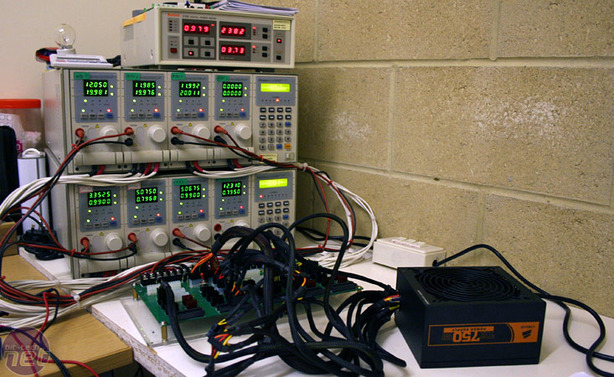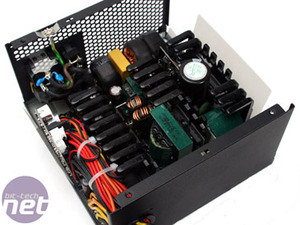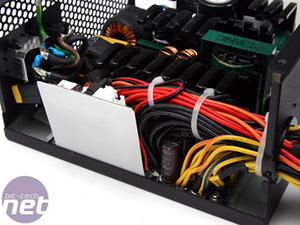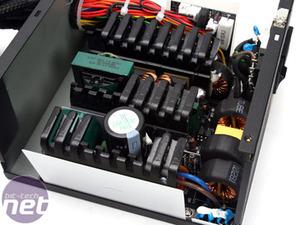What's Inside?
Please remember that this not only voids your five year warranty, but it's also significantly more dangerous than just playing around inside a PC when it's on – you have the full power of a wall socket at your fingertips, and not just 12V.A few screws later and we have the top off to find that the plastic preventing the fan flow is simply screwed on its underside – the first thing there is to whip that straight off! Without it installed, the noise pitch changed completely and while the air literally just pissed straight out of the honeycomb back (like you'd expect), the noise just changed significantly to simple air rushing as opposed to a combination of this and fan stress. If Corsair wants to keep the air in the unit longer, it should have opted for a reduced exhaust area, with a clear piece of plastic down most of the rear honeycomb area, forcing the air out near the PCB.
The three rows of heatsinks are also black, but they’re not the largest we've ever seen inside a PSU. In addition there is a good 2cm gap between the single PCB and the end of the unit, potentially leaving more space for a larger PCB and higher wattage PSU, or perhaps a modular HX version later? What you can also notice is that it's really very tidy – the cables are well managed and while there's glue used it's not dragged everywhere.
Testing Procedure
We test our power supplies under artificial load conditions and using in-house calculated load levels to check a PSU does what it says on the tin. While the industry is clearly geared to "real world" testing scenarios, in this situation anything we throw at it should be at most equally stressful in the real world.The recorded results on the test machine are also manually verified with a multimeter to check there is no voltage drop between the PSU connector and the load machine to ensure accuracy.


MSI MPG Velox 100R Chassis Review
October 14 2021 | 15:04













Want to comment? Please log in.